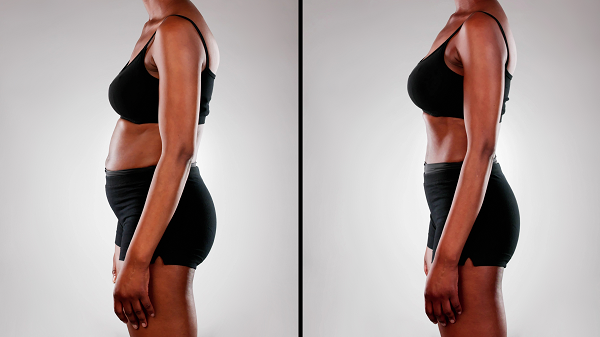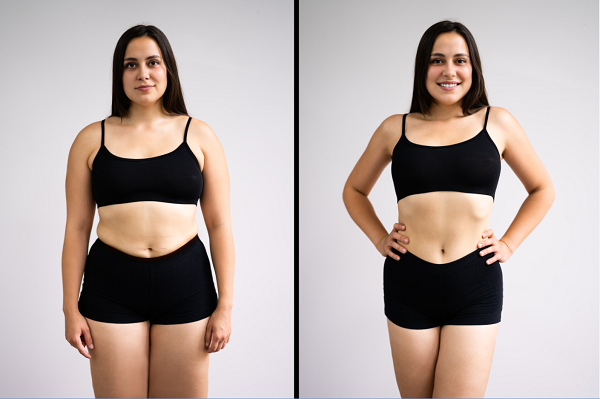Abdominoplasty
What is Abdominoplasty?
Abdominoplasty, commonly known as a tummy tuck, is a popular body contouring procedure often mistaken for weight loss surgery. However, its primary goal is to tighten loose skin around the abdomen, not to reduce weight. This surgery specifically targets the abdominal muscle wall, aiming to smooth out wrinkles, eliminate sagging, and tighten the skin around the waist and abdomen.
Loose skin in the abdominal area can result from significant weight loss, which might occur after pregnancy, through rigorous diet and exercise, or following weight loss surgery or liposuction. In some cases, Abdominoplasty surgery can be combined with liposuction, provided your plastic surgeon approves. This combination can help achieve a firmer, more toned abdominal area.

Benefits of Abdominoplasty
Abdominoplasty, or a tummy tuck, offers several benefits that go beyond just improving the appearance of your abdomen. Some of the key health benefits include:

- health and quality of life: A tummy tuck significantly enhances the look of your abdomen, giving it a more toned and youthful appearance.
- Boosted Confidence: Many patients experience a surge in self-esteem and confidence after surgery, positively affecting various life aspects.
- Better Posture: Tightening the abdominal muscles can improve posture and alleviate some back pain.
- Health Benefits: Removing excess skin and fat can lower the risk of skin infections and irritation.
By addressing these conditions, gastric sleeve surgery offers a comprehensive approach to improving overall health and quality of life.
Candidate for Abdominoplasty
A good candidate for tummy tuck surgery typically includes individuals who:
- Excess Skin and Fat: Best for those with loose or sagging skin due to weight loss or pregnancy.
- Good Health: Should be in overall good health without conditions that hinder healing.
- Realistic Expectations: Important to understand the surgery’s potential outcomes and limitations.
- Non-Smokers: Preferably non-smokers or those willing to quit, as smoking affects healing.
- Stable Weight: Should maintain a stable weight for at least six months before surgery.
What are the Different Methods of Abdominoplasty?
There are two primary methods for performing an Abdominoplasty :
- Full Tummy Tuck (Abdominoplasty)
A full tummy tuck, or abdominoplasty, involves a horizontal incision between the pubic hairline and the navel. This method is ideal for those with significant excess skin and weakened abdominal muscles. The surgeon removes excess skin and fat, tightens the muscles, and repositions the navel.
- Mini Tummy Tuck (Mini Abdominoplasty)
A mini tummy tuck, or mini abdominoplasty, is less invasive than a full tummy tuck. It involves a smaller incision and is suitable for individuals with less excess skin and fat. This method focuses on the lower abdomen and does not typically involve repositioning the navel.
Pre-Tummy Tuck Surgery Tips
To achieve the best results from your tummy tuck surgery, follow these essential tips:
- Choose a Certified Surgeon: Ensure your procedure is performed by a board-certified plastic surgeon.
- Avoid Blood Thinners: Refrain from alcohol, green tea, and vitamin supplements containing vitamins E and A to prevent bleeding during surgery.
- Skip Stimulants: Avoid caffeine and Arabic coffee, as they can complicate anesthesia.
- Stop Certain Medications: Discontinue any blood-thinning medications at least a week before surgery.
- Maintain a Healthy Diet: Eat a balanced diet for a sufficient period before the surgery to minimize complications.
Stages of Tummy Tuck operation
The tummy tuck procedure typically involves the following steps:
- Anesthesia: The surgery begins with the administration of anesthesia to ensure comfort throughout the procedure.
- Incision: A horizontal incision is made between the pubic hairline and the navel. The shape and length of the incision will depend on the amount of excess skin.
- Repair and Removal: The surgeon will repair weakened abdominal muscles and remove excess skin and fat.
- Closing the Incisions: The incisions are closed with sutures, skin adhesives, or clips.
Recovery and Aftercare
Recovery from abdominoplasty requires patience and proper care. Here are some tips to ensure a smooth recovery:
- Follow Your Surgeon’s Instructions: Adhering to post-operative care instructions is crucial for a successful recovery.
- Rest and Hydration: Ensure you get plenty of rest and stay hydrated to aid the healing process.
- Avoid Strenuous Activities: Refrain from heavy lifting and strenuous activities for at least six weeks post-surgery.
- Wear Compression Garments: These garments help reduce swelling and support the abdomen as it heals.
The Durability of Abdominoplasty Results
The results of abdominoplasty can be long-lasting, provided you maintain a healthy lifestyle. Here are some tips to ensure the durability of your tummy tuck results:
- Maintain a Stable Weight: Significant weight fluctuations can affect the results of your surgery.
- Healthy Diet and Exercise: Adopting a balanced diet and regular exercise routine can help maintain your new figure.
- Follow Post-Operative Care: Adhering to your surgeon’s post-operative care instructions is crucial for optimal healing and long-term results.
Abdominoplasty, or a tummy tuck, is a transformative procedure that can enhance your appearance and boost your confidence. By choosing medical tourism, you can access top-notch medical care at an affordable price. If you’re considering this procedure, consult with a qualified surgeon to discuss your options and embark on your journey to a flatter, more confident you. At IranMedVisit, we can help you achieve the best results by connecting you with experienced surgeons and providing friendly, comprehensive support throughout your medical journey.
For more detailed information on abdominoplasty and medical tourism, you can visit the University of Iowa Health Care.


